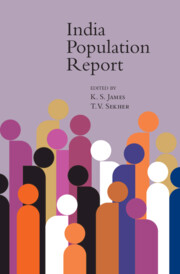5 - Gender Roles and Help-Seeking among Women Experiencing Marital Violence in India
Published online by Cambridge University Press: 15 August 2023
Summary
Introduction
The policy discourse relating to domestic violence in India was vastly strengthened by the enactment of the Protection of Women from Domestic Violence Act (2005), which not only provided an inclusive definition of domestic violence but also outlined the many care-seeking options it affords (Ministry of Law and Justice, 2005). Notably, domestic violence is defined to include perpetration or threatened perpetration of physical, emotional, verbal, sexual, and economic violence. The Act also appoints protection officers and calls for the establishment of crisis facilities to support those who experience violence. India is, moreover, a signatory to the Sustainable Development Goals (SDG), calling for the elimination ‘of all forms of violence against all women and girls in public and private spheres’ (SDG target 5.2) (United Nations, 2015). Despite these commitments, spousal violence against women and girls remains widespread, with 26 per cent of women aged 15–49 years experiencing physical, sexual, and/or emotional violence, and 24 per cent of women reporting the experience of physical and/or sexual violence perpetrated by their spouse in 2015–16. A reflection of women's powerlessness in marital relationships is the persistence of attitudes justifying the acceptability of marital violence, with as many as half of all women (51 per cent) and husbands (50 per cent) espousing that a husband is justified in beating his wife for at least one reason (International Institute for Population Sciences [IIPS] and ICF International, 2017).
The adverse effects of marital violence on the health and well-being of women and their children are well recognized. Injuries are, of course, the most direct effect and range from cuts, bruises, and aches to deep wounds, broken bones, sprains, dislocations, and even burns (see, for example, IIPS and ICF International, 2017). Adverse longer-term consequences have also been observed and persist even after a host of socio-demographic factors are controlled. As documented in a global review, consequences include low-birth-weight infants, induced abortions, sexually transmitted infections, and depression (World Health Organization [WHO], 2013).
- Type
- Chapter
- Information
- India Population Report , pp. 171 - 198Publisher: Cambridge University PressPrint publication year: 2024



